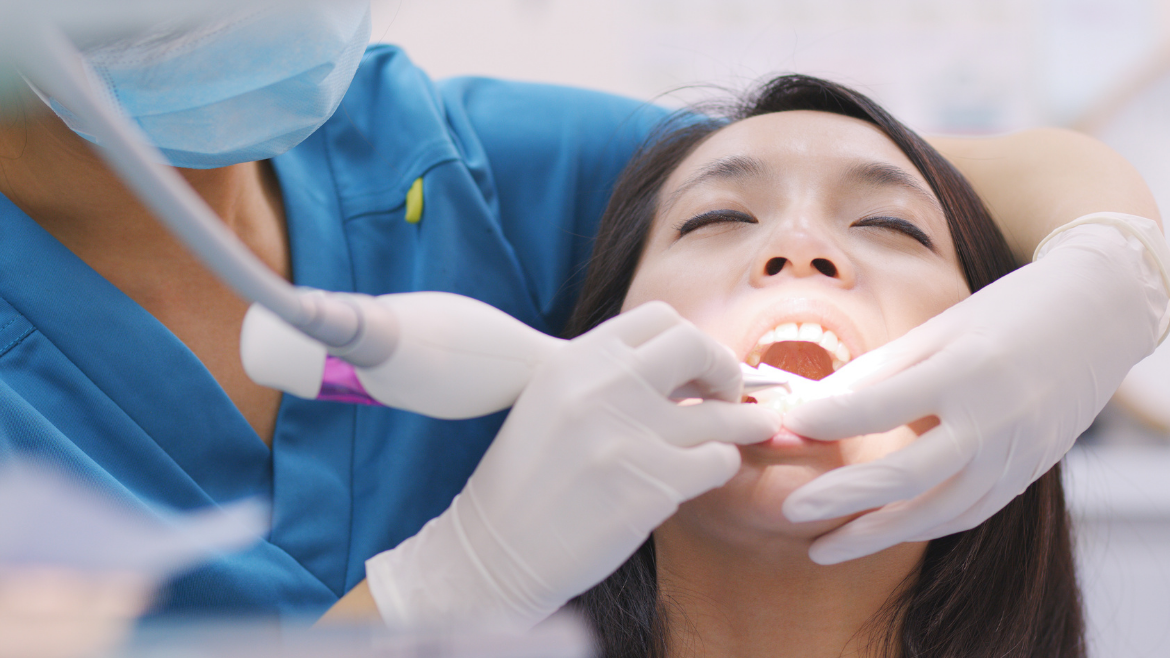What is Gum Disease?
Gum Disease Symptoms
Periodontics Treatment or Gum disease Treatment at Smilemax in Gurugram is mainly silent, referring symptoms may not look until the latest stages. However, warning symptoms of gum disease contains the following:
- Red/ swollen/ tender gums and other pain in a person’s mouth.
- Bleeding during brushing/ flossing/ eating hard meals.
- Gums which are receding and pulling away from the teeth, forming the teeth to appear longer than before.
- Loose and separation of teeth.
- Pus between the gums and teeth.
- Sores in the mouth
- Persistent smelly breath.
- A change in the manner a person’s teeth fit together when they bite.
- A change in the position of partial dentures.

Periodontics or Gum Disease Treatment and Types at Smilemax Gurugram
Gingivitis
- Gingivitis is the mild structure of periodontal disease.
- It forms the gums to build redness, swollen and bleed easily.
- There is mainly little and no discomfort at this stage.
- Luckily, gingivitis is reversed by the professional procedure and best oral care at home.
Periodontitis
- Uncured gingivitis can advance to periodontitis.
- With dynamic changes, plaque can occur and grows under the gum line.
- Toxins obtained by the bacteria in plaque.
- Plaque irritates the gums and stimulates a chronic inflammation response in which the body importantly converts on itself.
- The tissues and bone that manages the teeth are broken down and damaged.
- Gums get separated from the teeth, causing pockets between the teeth and gums which can become destroyed.
- Due to the disease progressing, the pockets deep down and large amounts of gum tissues and bones are destroyed.
- Eventually, teeth can build loose and may break out and require to be removed.
- Periodontitis diagnosis is mainly defined by stages and grades.
- While your periodontist organizes a thorough assessment of the one’s unique case, he and she may go through a stage varying from initial to severe which classified the acuteness of infection.
- Additionally, a patient’s periodontist may recommend a grade which communicates the ratings of disease progression as well as anticipation response to procedures.
Surgical Periodontal Procedures
- Most of the time a periodontist may require to perform a surgical treatment to cure periodontal disease and any infection it may have formed.
- This is due they get three years of professional training by applying rules of dental school.
- Periodontists are specialists in performing gum operations and are trained in managing the relevant and accurate comfort measures like:- sedation and anesthesia during surgery or procedure.

Types of Surgeries and Procedures
- Gum Graft Surgery- Appearing tooth roots are the causes of gum recession. Gum graft treatment will cover the appeared root and help avoid extra recession as well as bone loss. While gum graft surgery, your periodontist receives gum tissue from your palate and another donor source for covering the appeared root. Gum graft operation can be done on one tooth and more teeth, and may help limit the tooth sensitivity and repair the aesthetics of one’s smile.
- Regenerative Procedures- Your periodontist may consider a regenerative treatment when the bone managing your teeth has been damaged because of periodontal disease. These procedures can reverse most of the damage to regenerate the losted bone and tissues.
- While this procedure is performing , your periodontist holds back the gum tissue and takes out the disease-forming bacteria.
- Membranes or filters, bone grafting and tissue-stimulating proteins can be applied to motivate your body’s natural abilities for regenerating bones and tissues.
- Dental Crown Lengthening
- Some people may have a “gummy” smile due to the appearance of teeth that look short.
- In fact, the teeth may usually be the proper lengths, but they are packed with a lot of gum tissue.
- For correcting this, your periodontist will do a dental crown lengthening treatment.
- At the time of the dental crown lengthening procedure and excessive gum as well as bone tissues is reshaped to appear more of the real tooth.
- This can be performed to one tooth, to equal your gum line and to several teeth for appearing a natural and broad smile.
- Your dentist and periodontist may also prefer dental crown lengthening to treat a restorative and cosmetic dental treatment possible.
- Crown lengthening maintains the gum and bone level for looking more of the tooth so it can be repaired.
- Periodontal Pocket Procedures- Your bone as well as gum tissue must fit snugly over your teeth exactly as a turtleneck over your neck. When you suffer from periodontal disease, this managing tissue and bone is damaged and causing “pockets” over the teeth. During a periodontal pocket treatment, your periodontist holds back the gum tissue and takes out the disease-forming bacteria before the security of the tissue comes into place. In several cases, irregular surfaces of the infected bones are softened and smoothen to reduce areas where disease-forming bacteria can hide. This allows the gum tissue to best be reattached to healthy bone.



